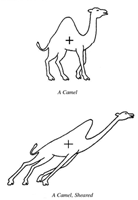A Fan�s Notes
January 6, 2008

I was an admirer of Phil Davis long before I got to know him personally. I probably heard of him from John Todd or George Forsythe, who were his colleagues at the National Bureau of Standards in the 1950s, and who were my professors several years later. Phil wrote papers and books about interpolation, approximation, and numerical integration in the 1960s. He is not listed as an author, but he played a prominent role in the creation of "A & S," Abramowitz and Stegun's Handbook of Mathematical Functions, one of the most useful and best-selling math books of all time.
Phil's 1965 book The Mathematics of Matrices was, unfortunately, not such a big seller. But I've long been a fan. Although the subtitle mentions "Linear Algebra," the book is really about matrices, not the axioms of vector spaces. Our community has been debating which subject we should teach for as long as I can remember. Anybody who knows me knows which side I'm on. There are a few theorems in the book, and early on Phil devotes a couple of pages to "The Role of Proof in Mathematics." You ought to read that section.
Two of the figures from that 1965 book on matrices are reproduced here. The first, which has one finger running across the columns and another running down the rows, shows how you really do matrix multiplication, when you don't have a computer handy. The second figure shows the effect of a shear transformation on a camel. The fact that the transformation is linear is profound and probably contrary to any popular conception of "linear." Have you ever seen figures like these in a text on linear algebra?
I met Phil's colleague Reuben Hersh before I actually met Phil. Their 1981 book, The Mathematical Experience, is as interesting and relevant today as it was when first published. It's not about mathematics; it's about being a mathematician. One memorable chapter relates a hypothetical conversation between a professor who has just won the Fields medal and the guy in charge of public relations at his university. Each is earnestly trying to understand what the other does for a living, but neither is entirely successful. I recently had a chance to talk to a student who was trying to decide whether to major in mathematics. I suggested that he read this book. If you haven't read it, may I suggest that you do, too?
It must have been at a SIAM meeting that I finally met Phil. He's been active in SIAM for many years. I will readily admit that when I first see a new issue of SIAM News, I immediately look for Phil's column. It's always about something interesting, almost always something I didn't know about or hadn't thought about. I find that very stimulating.
A few years ago I asked Phil if he knew a particular individual. He replied via e-mail: "Yes, I know X reasonably well. She is full of energy and ideas. She is a good writer. She loves math. And she is a bit wacky." Perhaps that could serve as a description of Phil himself.---Cleve Moler, SIAM President.


